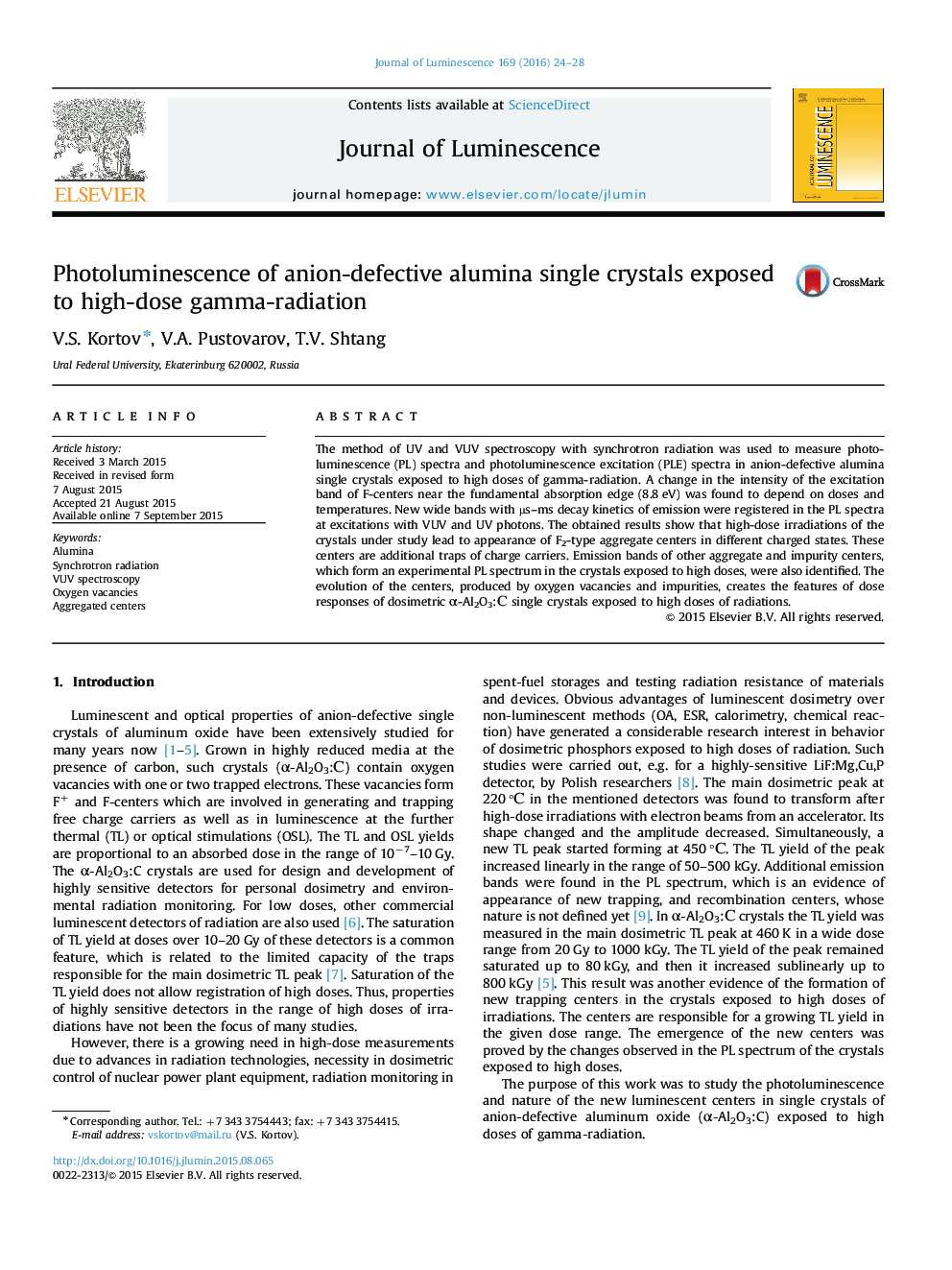| Article ID | Journal | Published Year | Pages | File Type |
|---|---|---|---|---|
| 5399205 | Journal of Luminescence | 2016 | 5 Pages |
Abstract
The method of UV and VUV spectroscopy with synchrotron radiation was used to measure photoluminescence (PL) spectra and photoluminescence excitation (PLE) spectra in anion-defective alumina single crystals exposed to high doses of gamma-radiation. A change in the intensity of the excitation band of F-centers near the fundamental absorption edge (8.8 eV) was found to depend on doses and temperatures. New wide bands with µs-ms decay kinetics of emission were registered in the PL spectra at excitations with VUV and UV photons. The obtained results show that high-dose irradiations of the crystals under study lead to appearance of F2-type aggregate centers in different charged states. These centers are additional traps of charge carriers. Emission bands of other aggregate and impurity centers, which form an experimental PL spectrum in the crystals exposed to high doses, were also identified. The evolution of the centers, produced by oxygen vacancies and impurities, creates the features of dose responses of dosimetric α-Al2O3:С single crystals exposed to high doses of radiations.
Related Topics
Physical Sciences and Engineering
Chemistry
Physical and Theoretical Chemistry
Authors
V.S. Kortov, V.A. Pustovarov, T.V. Shtang,
